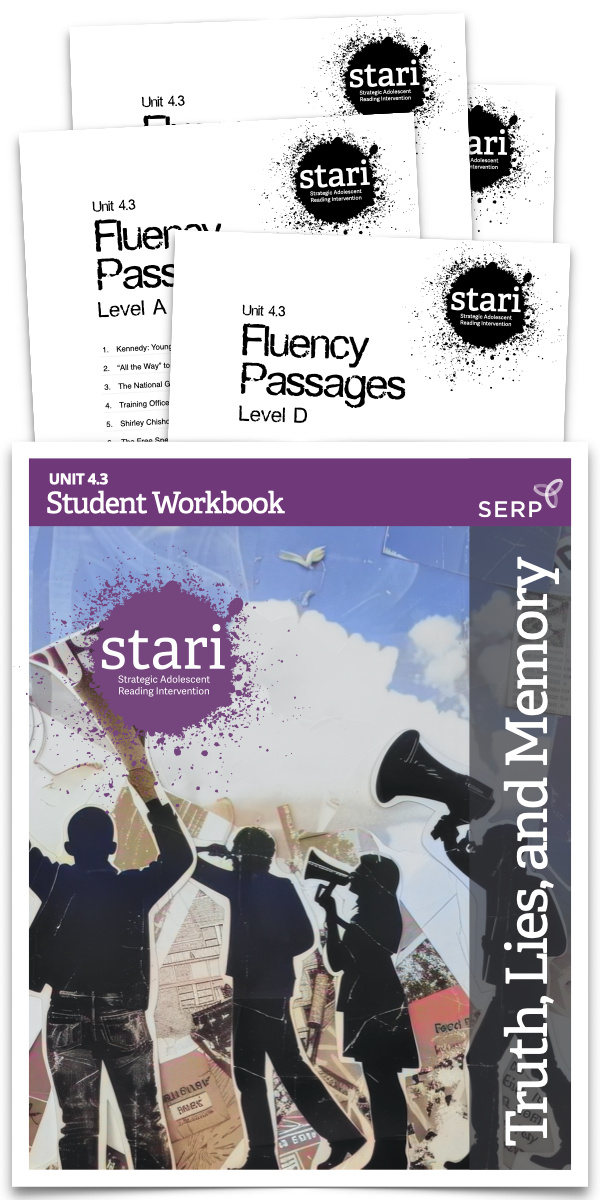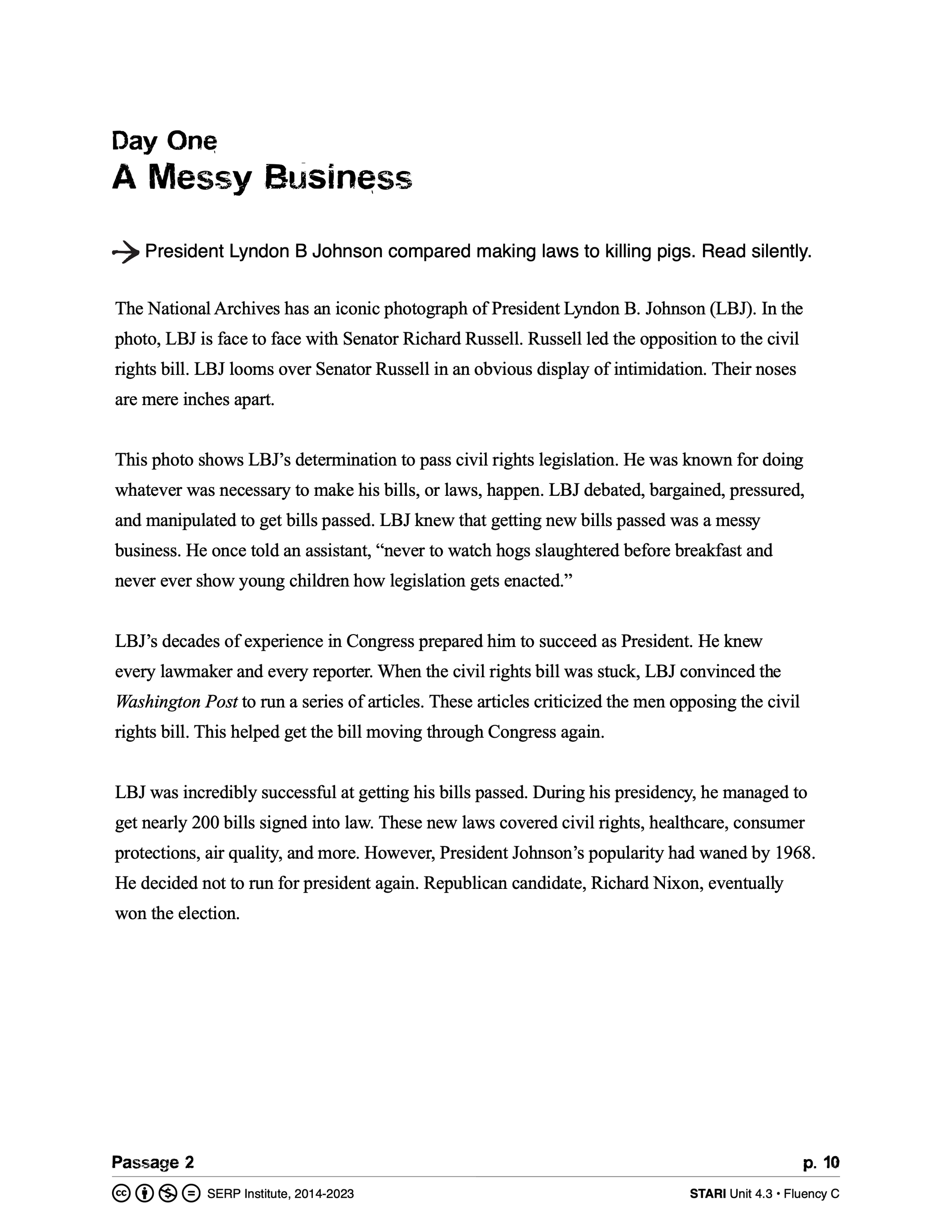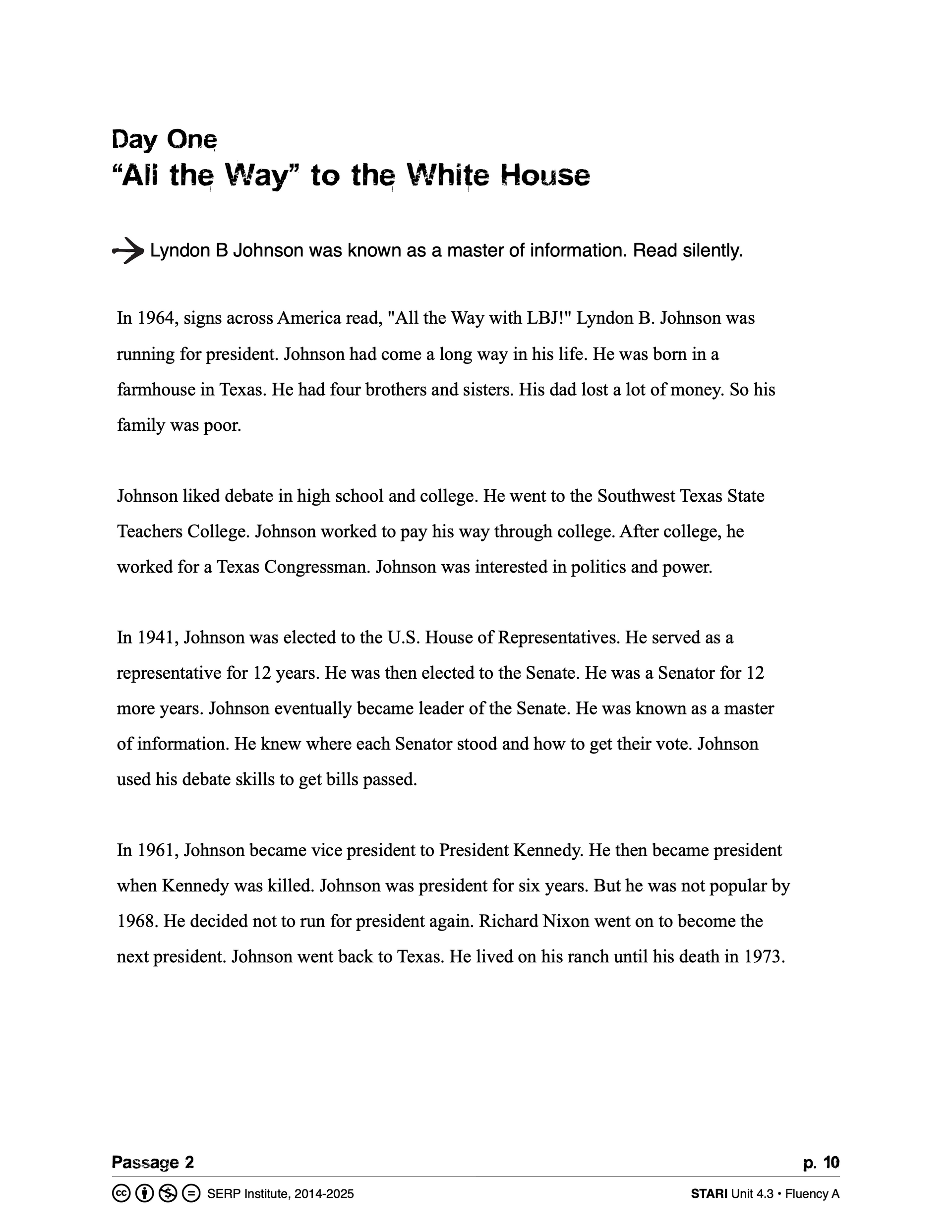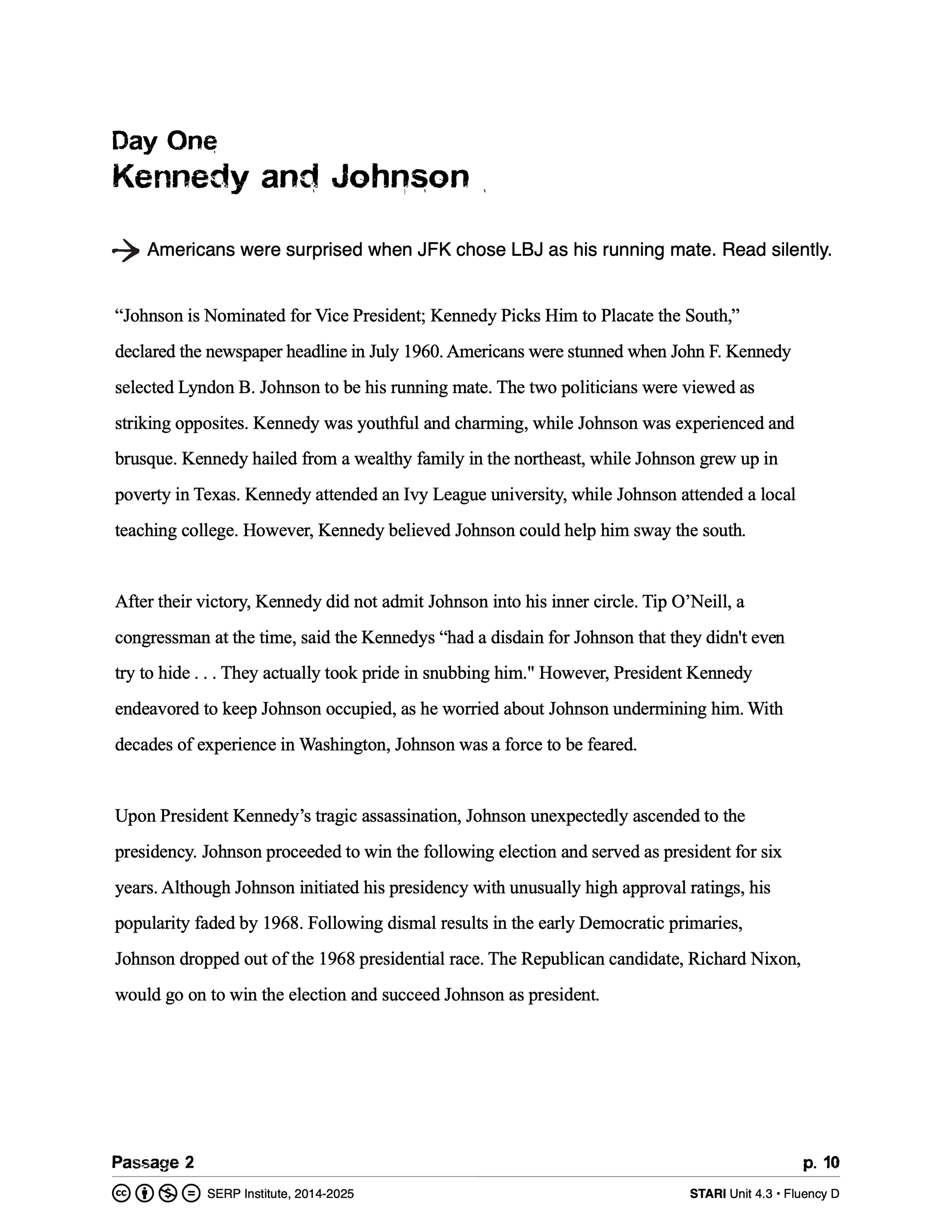Not Just Faster, Fluent! Why do STARI fluency passages work so well?
Fluency practice doesn't have to be boring!
At least, that's what we've discovered while creating fluency passages for STARI units, and honestly, it's become one of our favorite challenges as curriculum developers.The Science of Reading tells us that word recognition plus comprehension are the keys to skilled reading. When students can read quickly, accurately, and smoothly, comprehension soars!
More Than Just Fast Reading
Sure, STARI fluency work helps students increase their reading rate and develop smoother, more phrased reading. But we've packed so much more into these seemingly straightforward exercises. Think of them as literacy power-ups disguised as fluency practice.
Since fluency's ultimate goal is improved comprehension, we weave critical thinking questions into every lesson. We also strategically include words containing the decoding patterns students have been practicing in their teacher-guided lessons. This way, students get to apply their growing decoding skills "on the go" while reading connected text, exactly how they'll need to use them in real reading situations.
The Secret Ingredient: Rich Content
Here's what makes writing these passages genuinely enjoyable for us (and hopefully engaging for students): we load them up with fascinating non-fiction content. Research tells us that background knowledge is key for successful comprehension. In fact, it’s another important strand of the reading rope. So we take every opportunity to build background knowledge during STARI lessons, and fluency passages are a great place to do this. And we know that our students have lots to say about such topics, even if they are still building foundational reading skills. Having thoughtful discussions about real world topics is essential to building complex comprehension skills AND for student engagement! So instead of asking students to read generic passages about nothing in particular, we get to dive deep into research about topics that will directly support students' understanding of the novels they'll read in their STARI lessons.
Four Levels, One Rich Discussion
We prepare every fluency passage at four different Lexile levels, ensuring every student can access the content meaningfully. But here's the clever part: we overlap content between these different levels.
Picture this: instead of four random passages at different difficulty levels, students read four interconnected pieces that approach the same topic from different angles. When discussion time comes, every student contributes unique insights while building a deeper, more complete understanding together.

See It in Action: The LBJ Example
Take Fluency Passage 2 from Unit 4.3. All four passages explore Lyndon Baines Johnson, America's 36th president, but each offers a different lens:
Passages written at Level B and C
dive into specific legislation Johnson championed, Medicare and Civil Rights laws:
Passages written at Level A and D
focus on his path to the presidency and relationship with JFK:
The result?
A classroom discussion rich with multiple perspectives on this pivotal historical figure.
The Bigger Picture
STARI fluency passages do double duty. They build reading skills while expanding students' knowledge base in topics that connect to social studies, science, and beyond. Students aren't just practicing reading; they're becoming more knowledgeable, better-prepared readers who bring richer background knowledge to every text they encounter.
Because at the end of the day, fluent reading isn't just about speed. It's about creating confident, knowledgeable readers who can engage deeply with any text they encounter.
Emily Hayden is a SERP Literacy Specialist and develops curriculum for Strategic Adolescent Reading Intervention (STARI).





